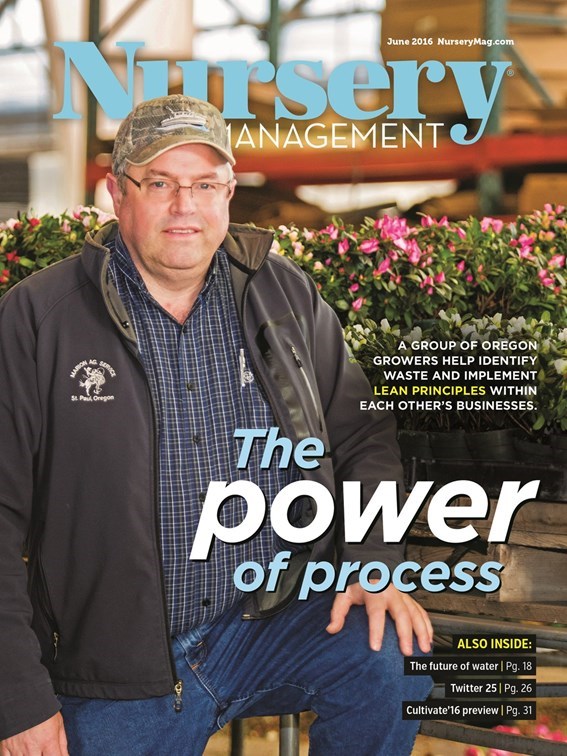
I work with plant breeders for a living. I help them select, promote and introduce their new selections. My college degree is in horticulture and landscape design. Lately, I’m finding myself torn about the new compact plant trend and how it will shape future gardens.
I realize growers need to fit as many plants on each rack to get the most out of the shipping expenses. I’ve heard big-box stores require five shelves to a rack. We know people are living in smaller places, and gardens are getting smaller and smaller. But…
What about the lovely, statuesque, architectural elements that define the world’s most famous gardens? I have been to many of the world’s best gardens in my new plant hunting travels, and not one of them is composed with only compact, bushy plants. What about background plants, hedges and focal points?
If plant breeders and big-box stores have their way, all of the shrubs, grasses, perennials and annuals available for sale to the average consumer will be less than 36 inches tall. That makes me sad. Take Hydrangea paniculata, for example. These were always back-of-the border, hedge or focal point plants. New selections coming on the market today are gorgeous, and full of flowers, but less than 3 feet tall. What about covering up that ugly neighbor’s fence or giving your garden the backdrop it needs to have amazing dimension and character?
Dimension and character simply aren’t possible with a selection of plants that are knee high or smaller. What will gardens of the future look like if every perennial is 12-18 inches tall and shrubs are less than 3 feet tall? It’s going to look really weird and we are all going to have a neck ache from looking down to enjoy them.
I shiver at the thought of never seeing cup plants and tall, billowy grasses, hollyhocks and clematis that can climb higher than your mailbox post. Imagine living in a garden where all of the plants are no taller than a four-year-old. If we continue allowing mass merchants to dictate how tall our plants are, how will we ever experience a butterfly or bumble bee at eye level?
Compact, floriferous perennials are great for sales and fantastic for massing in the garden, but mixing in taller plants makes for a diverse, complex composition that is way more appealing to the eye. So my question to all of you is how do we balance the need for efficient, cheaper shipping, and smaller garden spaces with the human eye’s need to dance around; jumping from the top of one plant to another, up and down, sideways and back? How do we add depth and dimension to gardens when our design elements are all 2-feet by 1-foot rectangles?
My design professor at the University of Delaware, W. Gary Smith, taught us that a garden made of “jelly beans” was a really boring garden. Shapes and heights should be varied to please the human eye and keep people involved in how the garden changes from one day or week to another.
If you want taller plants in your garden, you are going to have to buy them from a specialty nursery or order online. I’m hoping one section of our industry may help us buck this short plant trend – landscape designers. A few talented designers like Claudia West, Thomas Rainer, Roy Diblik, Patrick Cullina and Adam Woodruff are not only bringing tall perennials and large masses of perennials front and center, but they are showing textures and combinations that have never before been put together in gardens.
If designers are successful, and they create consumer demand for taller plants, how will we convince mass merchants and growers to carry them? How will that change the goals of plant breeders?
The alternative? We continue encouraging plant breeders to make compact plants and we end up with jelly bean gardens.

Angela Treadwell-Palmer founded and co-owns Plants Nouveau LLC., a company that specializes in introducing and marketing new plants to the nursery industry. She’s been around the world, experiencing world-famous gardens and remote areas looking for new ideas and exciting plants. angela@plantsnouveau.com.

Explore the June 2016 Issue
Check out more from this issue and find you next story to read.
Latest from Nursery Management
- GardenComm 2024 Annual Conference registration is open
- Landmark Plastic celebrates 40 years
- CropLife applauds introduction of Miscellaneous Tariff Bill
- Greenhouse 101 starts June 3
- Proven Winners introduces more than 100 new varieties for 2025
- CIOPORA appoints Micaela Filippo as vice secretary-general
- Rock Star Roses
- The container challenge





